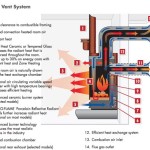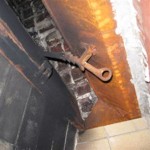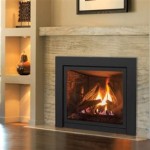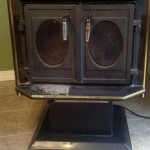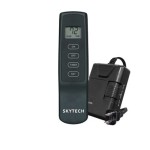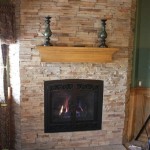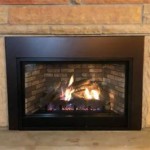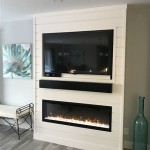Installing a Wood Burning Stove Into an Existing Fireplace
Installing a wood burning stove into an existing fireplace can be a cost-effective and efficient way to heat a home. It allows homeowners to leverage the existing chimney system while upgrading to a more controllable and heat-efficient appliance. However, this process requires careful planning, adherence to safety regulations, and potentially professional assistance to ensure a safe and effective installation.
Before beginning the installation, a thorough assessment of the existing fireplace and chimney is crucial. This involves inspecting the chimney for structural integrity, checking for any obstructions or damage, and verifying that it is properly sized for the wood burning stove. The stove's manufacturer specifications will provide critical information regarding chimney diameter requirements. Ignoring these specifications can lead to inefficient burning, smoke backdraft, and potentially dangerous carbon monoxide buildup.
Local building codes and regulations related to wood burning stove installations must also be researched and followed. These codes often dictate specific clearances from combustible materials, requirements for hearth protection, and permits needed for the installation. Contacting the local building department prior to beginning the project is essential to ensure compliance and avoid future complications.
Key Point 1: Chimney Inspection and Preparation
The chimney is the most critical component of a wood burning stove system. A professional chimney sweep should inspect the chimney flue for creosote buildup, cracks, or other damage. Creosote is a highly flammable byproduct of wood combustion, and its accumulation can lead to dangerous chimney fires. A thorough cleaning and inspection are necessary to ensure the chimney is safe and functional.
If the chimney flue is damaged or improperly sized, a stainless-steel chimney liner might be required. A liner provides a smooth, consistent surface for exhaust gases to flow and prevents corrosive byproducts from damaging the masonry. The liner should be properly insulated to maintain flue temperatures and improve draft. The diameter of the liner must match the stove's exhaust outlet size to ensure proper draft and combustion.
The existing fireplace damper should be removed or permanently sealed to prevent it from interfering with the stove's operation. A top-sealing damper can be installed at the top of the chimney to prevent heat loss when the stove is not in use. This type of damper seals more effectively than a traditional throat damper and can improve energy efficiency.
Key Point 2: Stove Placement and Hearth Protection
The placement of the wood burning stove within the fireplace opening is critical for safety and efficient heat distribution. The stove must be positioned according to the manufacturer's specified clearances from combustible materials, such as walls, mantels, and flooring. These clearances are typically measured in inches and are designed to prevent overheating and potential fires.
Hearth protection is another crucial safety consideration. The existing fireplace hearth may not provide adequate protection for the higher temperatures produced by a wood burning stove. An extension of non-combustible material, such as tile, stone, or concrete, may be required to meet local building codes and protect the flooring from sparks and embers. The size and thickness of the hearth extension will depend on the stove's manufacturer specifications and local regulations.
Leveling the stove is also important to ensure even heat distribution and prevent stress on the stove’s components. Shims can be used to adjust the stove's position and ensure it sits level on the hearth. A level stove will also burn more efficiently and reduce the risk of smoke spillage.
Key Point 3: Connecting the Stove to the Chimney
Connecting the wood burning stove to the chimney liner requires careful attention to detail. A stove pipe, typically made of black steel or stainless steel, is used to connect the stove's exhaust outlet to the chimney liner. The stove pipe should be the same diameter as the stove's exhaust outlet and should be installed with a slight upward slope towards the chimney to facilitate draft.
All pipe joints should be securely fastened with screws or clamps to prevent leaks of smoke and carbon monoxide. The connection between the stove pipe and the chimney liner should be tightly sealed with high-temperature sealant to prevent any exhaust gases from escaping into the living space. A flue collar adapter may be needed to connect the stove pipe to the chimney liner.
After the stove is installed and connected, a test burn should be conducted to verify that the stove is drafting properly and that there are no leaks in the system. During the test burn, monitor the stove's operation closely and check for any signs of smoke spillage or excessive creosote buildup. A carbon monoxide detector should be installed in the room with the stove to provide an early warning in case of a malfunction.
Regular maintenance, including chimney cleaning and stove inspection, is essential for safe and efficient operation. The chimney should be inspected and cleaned at least once a year, or more frequently if heavy use is anticipated. Proper wood storage practices, such as storing wood under cover and allowing it to season properly, can also reduce creosote buildup and improve combustion efficiency.
Consider the long-term implications of installing a wood burning stove. While offering a supplemental heating source, there are responsibilities associated with wood acquisition, storage, and the environmental impact of wood burning. Assess if a wood burning stove aligns with personal values and local environmental regulations before committing to the installation.

Converting A Fireplace To Wood Burning Stove Chesneys

Converting A Fireplace To Wood Burning Stove Chesneys

How To Prepare A Chimney For Wood Burning Stove Houzz Ie

Can You Install A Wood Stove In Fireplace Direct Stoves

Victorian Fireplace Hobbit Installation Small Stoves

Chimney Installations

Woodburner Installations In Victorian Fireplaces Cosy Stoves

Can You Install A Wood Burning Stove In An Existing Fireplace

Installing A Wood Burner Into An Existing Chimney Hetas Installation

Can You Install A Wood Burning Stove
Related Posts

